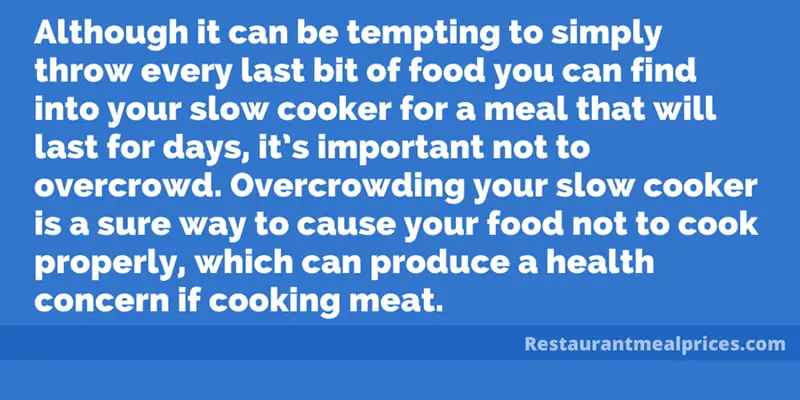We’ve all fantasized about simply throwing a bunch of ingredients into our slow cooker before we leave for work, and coming home to a perfectly cooked meal at the end of the day. Unfortunately, that fantasy can quickly become a harsh reality when we open the lid a few hours later to find a meal that either hasn’t cooked, or is a mound of sloppy mush. So, where did you go wrong? In this article, we take a look at the best tips for slow cooker meals, so you can come home to perfectly cooked meals every time.
Choose the Right Cut
Cooking meat in your slow cooker? There is a method to placing meat in your slow cooker and choosing the right cut can make all the difference. It’s also important to note that not every type of meat is going to cook the same, so you’re going to want to do your research before dropping it in the slow cooker.
FoodNetwork.com gives us their first tip for the most satisfying way to cook meat in your slow cooker:
“Chuck roasts, short ribs, pork shoulders and lamb shanks (think fatty and tougher meats) become meltingly tender with the moist, low heat of a slow cooker. Leaner cuts like pork tenderloin tend to dry out. Likewise, dark meat chicken — thighs, drumsticks, etc. — will remain juicier than white meat breasts.”
Don’t Overcrowd

Although it can be tempting to simply throw every last bit of food you can find into your slow cooker for a meal that will last for days, it’s important not to overcrowd. Overcrowding your slow cooker is a sure way to cause your food not to cook properly, which can produce a health concern if cooking meat.
Danilo Alfaro of The Spruce Eats tells us why a successful meal in the slow cooker comes down to not overfilling:
“Each model will have its own guidelines about how full to fill it, but in general it’s best not to fill a slow cooker more than two thirds of the way. Overfilling it will make it harder for the unit to reach its target temperature, which can in turn produce a food safety hazard if the temperature remains too low for too long. And while it’s usually necessary to add some sort of liquid to the crock, you can probably get away with less than you think. The cooking process will draw out the juices in the food and since they don’t evaporate, those juices become the braising liquid. But again, follow the manufacturer’s instructions with respect to adding liquid.”
Know the Slow Cooker’s Limits
It’s important that you know both your slow cooker’s limits, and the limits of whichever food you’re trying to slowly and delicately cook. Some foods are more delicate than others, and you just may be setting them up for failure by keeping them trapped in your slow cooker for hours on end.
Laura Frankel, author of “Jewish Slow Cooker Recipes,” explains why knowing your slow cooker’s limits is key to a perfectly cooked meal on Today.com:
If you want vegetables to stay whole, don’t put them in the slow cooker on high for 12 hours unless they’re hard-shelled, like squashes. “Delicate vegetables like zucchini or peppers will melt into nothing,” Frankel explained. “That’s a bad thing for zucchinis but can be great for peppers. When you’re slow cooking vegetables, put the slow cooker on a delayed start for about three to four hours and keep it set to low.”
Want to ditch the slow cooker and have a look at a takeout menu instead? We’ve got you covered. We provide dozens of top restaurant menus and their prices all in one place, making it easy to get what you want in a flash. Take a look at our selection here!

